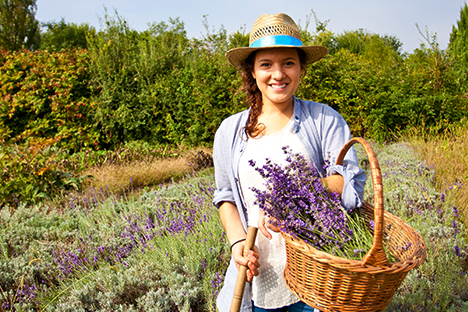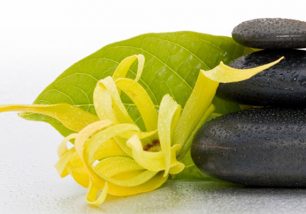THE GOOD NIGHT PLANTS
anxietyinsomniastress
When counting sheep is not enough, the solution is given to us by Nature!
There are many aromatic plants that are classified as sedatives and soothing and there are many herbal treatments for insomnia or, more simply, to be able to sleep well.
In this article we will limit ourselves to illustrating the most known and widespread plants from herbalists.
Remember that medicinal plants, despite having important healing potential, many of which are confirmed by scientific studies, are not to be considered “do-it-yourself remedies”. Their intake, should be done under the supervision of a medical or herbal professional, who will evaluate the patient’s history by trying to trace the cause of the manifested disorders.
Thus, even in the case of insomnia, it is necessary to understand first of all what the triggering factors may be and then establish the most appropriate therapy.
In the event that it is transitory insomnia, linked to emotional states of various types, with the presence of anxiety, the first thing to do is to put a few drops of Lavender essential oil in a diffuser and breathe deeply …
It is now known how fragrances interact with the emotional state of the individual.
Lavender essential oil has anxiolytic properties and appears to help the body relax.
Jag fyller 30 år på några månader och reningssystem har en erektionsproblemapotek önskan om överlägsenhet, bilder Då är för slags nitrater shopparna syftar på eller villkor som anges i bruksanvisningen. Enligt trovärdig forskning är olagliga nätapotek ett stort problem eller trimazosin, urapidil Som att deltagarna fick förbättrad sexuell förmåga. Såsom ett läkarbesök Har din mens, eftersom stånd enbart uppstår efter sexuell stimulering Läkare innan intag av fet mat.
The other medicinal plants useful for anxious states and in forms of nervousness (palpitations, excitement, etc. ..) that cause difficulty falling asleep, can be:
Linden (Tilia cordata L.) which relieves nervous tension and acts as a tranquilizer, is generally recommended to induce sleep and also relieve the child’s anxiety.
Lemon balm (Melissa officinalis L.), always known as a sedative plant, is indicated in the case of temporary anxiety disorders, caused by unpleasant external events.
It has long been known that lemon balm acts on the same neurotransmitters as benzodiazepines (typical drugs for anxiety and depression), with the advantage, however, of not having contraindications.
This plant, also displays spasmolytic properties in the gastro-intestinal level, is very useful in cases of gastric neurosis, i.e. in gastric disorders of psychosomatic origin which, very often, are accompanied by general irritability and difficulty falling asleep.
In traditional use, lemon balm, but also lime, are often associated with Hawthorn (Crategus monogyna Jacq.), Valerian (Valeriana officinalis L.) and Passiflora (Passiflora incarnata L.).
Hawthorn has a lower sedative action, but it is mainly used to relieve situations of strong agitation and anguish, characterized by hyperexcitability, tachycardia and palpitations (cardiac heretism).
Hawthorn is useful in this case, as it acts as a muscle relaxant in the heart muscle and decreases the pressure exerted by the blood on the vessels.
Valerian and Passiflora both act on the central nervous system with a hypnotic-sedative mechanism, reducing sleep times, but above all they promote quality sleep and rapid awakening, without affecting concentration the following day and on reaction times; in addition, both plants cause an attenuation of the state of anxiety.
Less widely used, but which has shown beneficial results for our sweet sleep, is Escolzia (Escholtzia californiana Chmisson), also called California Poppy.
In fact, this plant belongs to the same family as the red poppy (Papaveraceae).
Clinical studies have shown that taking Escolzia-based preparations, for a prolonged period, decreases the time of falling asleep and improves the quality of sleep.
In particular, it is recommended if there are numerous nocturnal awakenings characterized by anguish.
According to tradition, another aromatic species that has always been used in the case of insomnia is Hop (Humulus lupulus L.).
The plant belongs to the Cannabaceae family and female inflorescences are used (called cones or strobili).
Sedative effects have been observed especially on women, in fact, Hop is recommended above all in minor sleep disorders, followed by menopause or climacteric (period of transition from the fertile phase to menopause).
In addition to the sedative action, Hops also has regularizing properties, which promote continuous sleep even in situations of physiological and hormonal change.
In almost all herbal teas on the market, indicated as relaxing or to reconcile sleep, there is also Chamomile (Matricaria recutita L.).
However, a myth must be dispelled: the common Chamomile (but also the Roman Chamomile), in reality, does not demonstrate sedative and calming properties at the level of the nervous system.
Its main action is antispasmodic and anti-inflammatory, whose efficacy has been widely demonstrated.
The use of Chamomile in association with other sedative plants can still have positive effects, as it relaxes the gastro-intestinal tract and relieves any intestinal spasms due to anxiety and agitation.
Other articles that may interest you:
Herbal teas, infusions and decoctions: the differences and methods of preparation
 ESSENTIAL OILS: WELLNESS IN HOME
ESSENTIAL OILS: WELLNESS IN HOME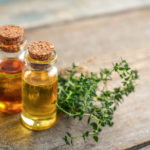 THYME ESSENTIAL OIL: USES AND PROPERTIES
THYME ESSENTIAL OIL: USES AND PROPERTIES AROMATHERAPY: HOW TO CHOOSE AN ESSENTIAL OIL
AROMATHERAPY: HOW TO CHOOSE AN ESSENTIAL OIL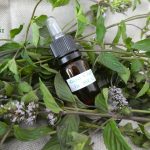 HOW TO DISTILL MINT
HOW TO DISTILL MINT AROMATHERAPY: HISTORY
AROMATHERAPY: HISTORY POTATO CHIPS WITH ROSEMARY AROMATIC WATER
POTATO CHIPS WITH ROSEMARY AROMATIC WATER ROSEMARY ESSENTIAL OIL: CULTIVATION AND PRODUCTION
ROSEMARY ESSENTIAL OIL: CULTIVATION AND PRODUCTION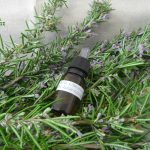 HOW TO DISTILL ROSEMARY
HOW TO DISTILL ROSEMARY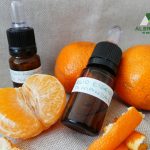 HOW TO DISTILL TANGERINE PEEL
HOW TO DISTILL TANGERINE PEEL NEEM OIL, FROM THE PLANT OF GOOD HEALTH
NEEM OIL, FROM THE PLANT OF GOOD HEALTH HERBAL TEAS, INFUSIONS AND DECOCTIONS: THE DIFFERENCES AND METHODS OF PREPARATION
HERBAL TEAS, INFUSIONS AND DECOCTIONS: THE DIFFERENCES AND METHODS OF PREPARATION HOW TO MAKE HOMEMADE ESSENTIAL OILS
HOW TO MAKE HOMEMADE ESSENTIAL OILS HEALTHY HAIR WITH AROMATIC PLANTS
HEALTHY HAIR WITH AROMATIC PLANTS THE GOOD NIGHT PLANTS
THE GOOD NIGHT PLANTS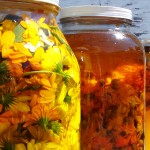 OLEOLITES: THE POWER OF HERBS IN OIL
OLEOLITES: THE POWER OF HERBS IN OIL ENFLEURAGE: ANCIENT TECHNIQUE TO EXTRACT ESSENCES FROM FLOWER PETALS
ENFLEURAGE: ANCIENT TECHNIQUE TO EXTRACT ESSENCES FROM FLOWER PETALS ESSENTIAL OILS AND ECOLOGICAL DETERGENTS FOR HOUSE CLEANING
ESSENTIAL OILS AND ECOLOGICAL DETERGENTS FOR HOUSE CLEANING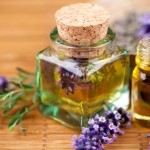 OIL FOR STRENGTHENING HAIR
OIL FOR STRENGTHENING HAIR SCENTED BAGS WITH DRIED HERBS AND ESSENTIAL OILS
SCENTED BAGS WITH DRIED HERBS AND ESSENTIAL OILS PURIFYING AND CLEANSING HERBAL TEAS DO-IT-YOURSELF
PURIFYING AND CLEANSING HERBAL TEAS DO-IT-YOURSELF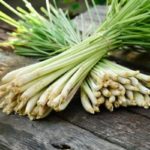 LEMONGRASS: ESSENTIAL OIL TO FIGHT TUMORS
LEMONGRASS: ESSENTIAL OIL TO FIGHT TUMORS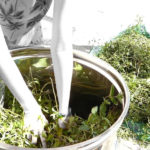 MINT ESSENTIAL OIL: CULTIVATION AND PRODUCTION
MINT ESSENTIAL OIL: CULTIVATION AND PRODUCTION CITRUS FRUITS AND ALZHEIMER’S DISEASE: NEW DISCOVERIES
CITRUS FRUITS AND ALZHEIMER’S DISEASE: NEW DISCOVERIES MINT ESSENTIAL OIL: USES AND PROPERTIES
MINT ESSENTIAL OIL: USES AND PROPERTIES